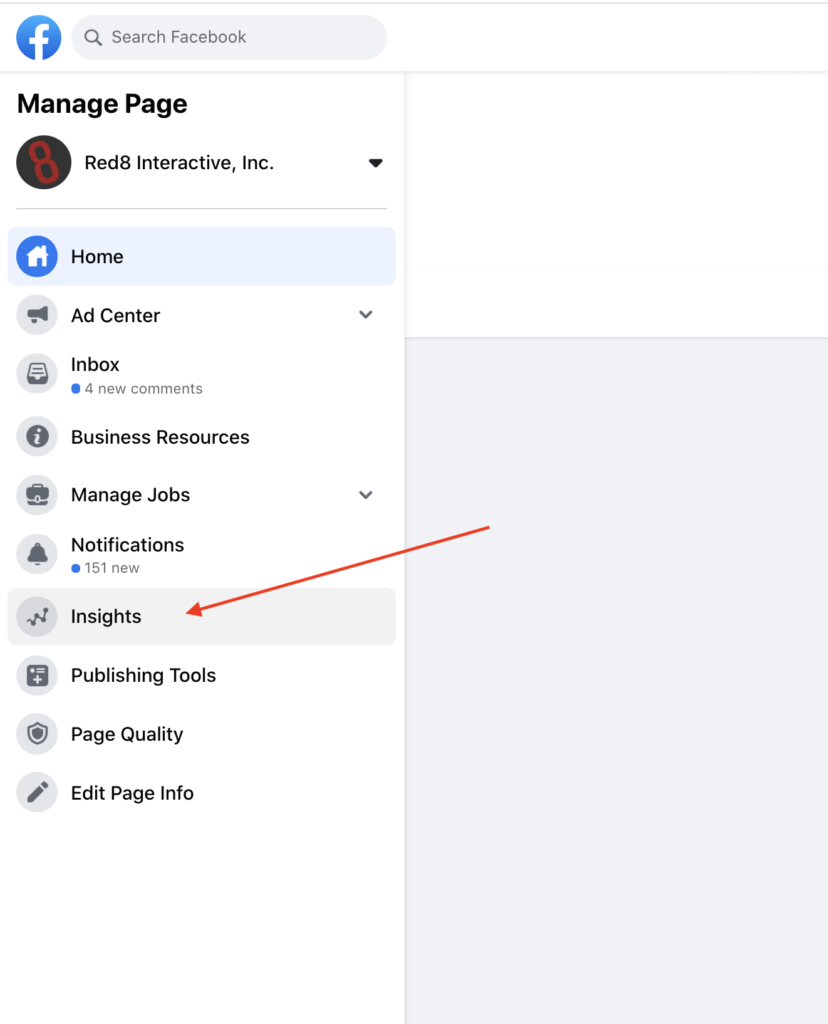Your cart is currently empty!

Profitable Digital Marketing Funnels
Reading Time: 10 minutesAuthor:
How Modern Digital Marketing Funnels Balance Traffic, Trust, and Value
For small businesses, effective digital marketing funnels are more important now than they’ve ever been. The customer’s journey is more likely to be online, so attracting and leading customers to buy your product or request services from your small business is now an online process.
Profitable Digital Marketing relies heavily on marketing funnels. Funnels are one of the most efficient ways to drive users to your virtual door.
A marketing funnel has three parts: the top, the middle, and the bottom. Marketing needs to drive quality traffic to the top of the funnel. The middle of the funnel uses microtransactions to build trust. The bottom of the funnel is where marketing delivers a mutual exchange of value.
Traffic, Trust, and Value – are the strategies for top-of-funnel, mid-funnel and bottom-of-funnel tactics. Three-stage digital marketing funnels are an effective online marketing strategy for your business.
Why Digital Marketing Funnels are Important

A digital marketing funnel helps prospects get to know a brand by helping them understand a business’s products and services. The Online Marketing Institute reports that it takes 7+ touches to deliver a qualified sales lead. A marketing funnel doesn’t fight this new normal, it uses it to direct and qualify customers and draw them in.
It begins with an awareness stage at the top and widest part of the funnel, where digital marketing attracts future customers.
As prospects travel through the funnel, trust is built using a series of microtransactions. This can be as simple as a post or page interaction or the exchange of an email address for a lead magnet through to a purchase where value is created. Value for the customer and value for the small business.
Top-of-Funnel – Tactics that Drive Traffic
Top-of-funnel traffic can be generated in many ways. For most small businesses, high-quality, relevant content that’s promoted using digital ads is the most effective. Promote the content using Social Media and inexpensive traffic ads on Facebook and Instagram. Set the target audiences to broadly represent your best customers.

Your business’s Facebook page is a good resource for this initial targeting. Access your business Facebook page and look for Insights on the menu. Click on this area, and Facebook will give you an overview of the characteristics of people who interact with your page.
Test various audiences to see which is most likely to interact with your brand and offer. You want to “feed the pixel,” meaning you want to drive interested customers back to your website and/or Facebook page so that qualified audiences can be created for mid-funnel activity.
It’s not too early to start targeting the best customers. Best customers tend to be heavy category users—the 20% of customers who drive 80% of category sales. The ratios will be different, but almost every category has the best customers. You want the top-of-funnel traffic to be weighted toward these heavy category users. For example, pull a customer file and use RFM analysis to identify your best customers. Use this file to create a Facebook audience. If your audience is large enough (+/- 1,000 records), you can make a lookalike audience. This gives you a much larger audience to target with your top-of-funnel traffic ads. The resulting traffic will have a higher concentration of best customers.
Mid-Funnel – Tactics that Build Know, Like and Trust
Mid-funnel tactics should be designed to generate microtransactions of ever-increasing value. Each time a potential customer engages with the brand, a bit of trust is created. The mid-funnel is your opportunity for potential customers to know, like, and trust your brand. It can be as simple as a post ‘like,’ or a comment on a post. This can lead to a page like or a post share. Then, they might provide their email address in exchange for a lead magnet such as an e-book. Each action builds trust and further refines your audiences.

Pro Tip
Mid-Funnel Tactics 🌟
Mid-funnel tactics are your best opportunity to let your prospect know, like, and trust your brand.
This works because the Reciprocity Principle says people don’t like being indebted to others. The value of the transaction isn’t as important as the fact that it’s a gift. You are offering valuable content for free. The user reciprocates by engaging with the content. This may be nothing more than following the link and consuming the content, but they are telling you that it interests them. If the content interests them, then your product or service may interest them as well.
For more on this (and a lot more!) get a copy of Influence: The Psychology of Persuasion by Robert Cialdini.
Each time a trust-based interaction occurs, a relationship is developed. As the perceived value of the transaction increases, so does the trust level. Microtransactions are the key to building trust and mid-funnel success.
Bottom-of-Funnel – Tactics that Create Value
The hard work and investment in the top and mid-funnel will now pay off in the bottom funnel tactics. This is where you use targeted conversion advertising and email marketing to generate sales. Start with something small, a low-cost product or service. This will generate revenue and continue to build trust. Then, as you learn more about your customers and they learn more about you, higher-value products and services can be offered. Your audiences are small at this point, which lowers the cost of your marketing, but you can expect much higher conversion rates and ROI.
An effective digital marketing funnel provides the right incentive at every step of the customer’s journey. It tracks data and uses automated processes to deliver appropriate transactions at each stage.
In the end, a marketing funnel delivers:
- Brand awareness that attracts customers
- Effective lead capture
- Better conversion rates
- A more positive customer experience
How the TTV Model Fosters Customer Relationships
An effective digital marketing funnel is constructed and based on three stages: High-quality Traffic, a level of Trust, and the mutual exchange of Value. We use the acronym TTV (Traffic, Trust, and Value) to describe these stages.
Each stage takes work and requires attention as it leads to the next. They are equally important to the marketing funnel. Keeping them in balance and constantly improving them is a winning formula. If this strategy were a three-legged stool, you wouldn’t want the legs to be different lengths.
An effective digital #marketing funnel has three stages: it starts with high-quality traffic, then builds trust, and finally, there's a mutual exchange of value. TTV – Traffic, Trust, and Value. Share on XWe’ll delve into the rewards TTV delivers when implemented, but first, let’s look at this strategy from the customer’s perspective, the outside-in perspective. From the customer’s POV, there are five broad areas of interest:
- Problem recognition
- Information searches
- Evaluation of alternatives
- Purchase decisions
- Post-purchase behavior
The marketing funnel and TTV focus on the first three, which leads to the fourth. Let’s look at each in turn.

Traffic
This section will provide ideas and suggestions for effective, low-cost traffic building. It’s longer than the next two sections, Trust and Value because the effectiveness of digital marketing funnels starts at the top. Quality added to the top of the funnel produces better results.
Broadly, you want to share high-value content that will interest and benefit your target customers. You want to reach large numbers of people at low cost and let their actions demonstrate their interest in your product or service offering.
SEO is an obvious source of traffic. It should definitely be a consideration, but SEO is a long game. The more local your business is, the more important it should be, and the time and effort required to rank is lower. However, rank is not magic, and it’s not free. To achieve rank, even in a local market, investments in search engine optimization and patience are required. It’s a long climb, so hire an expert.
After SEO, think about YouTube. YouTube is the second most important search platform. Consumers are using YouTube at ever-increasing levels. Google reports that YouTube reaches more 18- to 49-year-olds in an average week than all cable TV networks combined. YouTube is also a very cost-effective media channel. It can be used for all stages of the marketing funnel.
Social media has been a good channel for this, but while it’s still an effective channel, you can no longer achieve much without paying for the delivery. You don’t have to spend a lot, and if you have a plan, the investment can significantly impact the end result of your digital marketing program.
The first thing you need to do is create high-value content, such as blog posts that rank, and share them on all the social media platforms and your email list. This is an important, in fact, vital first step. Then, use low-cost digital advertising like Facebook traffic campaigns or Engagement campaigns to invite interested readers back to your website or Facebook page. Budgets of $10 to $20 per day are sufficient for this effort.
At this point, the goal isn’t to sell anything. The advertising and content are being used to feed the pixel. You are trying to attract potential customers. The readers who follow the link to your website or engage with the post on Facebook or Instagram are tracked, and the data is used to create custom audiences.
Quizzes, contests, and YouTube content are also effective traffic drivers.
For top-of-funnel efforts, you are looking for a nice balance between quantity, quality, and cost. You want a volume of reasonable quantity, but you don’t want to pay for a highly targeted campaign. You want people to identify themselves as someone who’s interested in your product or service, after which you can use this group to create a lookalike audience for lower-funnel activity.

Trust
The mid-funnel activity should be focused on generating trust-building microtransactions. You are still building audiences, but you will start being more focused. Engagement and Conversion campaigns will enter the mix. This media will have a higher CPM (Cost per Thousand) compared to the top-of-funnel tactics, but the quantity is lower because your targeting has improved, and the quality is higher. You want to gradually increase the significance of the trust-building transactions while at the same time narrowing the focus of the effort.
Start with small things like a post Like, a page Like, adding a comment to a post, or sharing a post. As your targeting narrows, increase the significance of the transaction. Ask them for their email address in exchange for a lead magnet like an e-book or infographic. Begin the relationship with tiny exchanges of value. As the exchange value increases, so does the trust.

Value
The bottom-of-funnel marketing should focus on creating mutual value. The work you’ve done in the upper funnel will pay off here. The audience has narrowed to prospects who are more likely to purchase something of value from you because they trust you. You are more likely to be offering something of value to them because you’ve put the effort into refining the audience. An effective funnel will result in surprisingly high conversion rates and ROIs.
Social media advertising and email marketing are both highly effective bottom-of-funnel media. For example, remarketing, sometimes called retargeting, targets specific website visitors and is very efficient. I’m sure you’ve seen the ads from Amazon for products you’ve viewed on their website. You can do this too. We recently helped an Inn8ly customer with a remarketing campaign. They spent less than $100 on ads to reach less than a thousand people and generated over $3,000 in sales.
Email marketing can also target people who clicked on a link in a previous email but didn’t purchase.
You can also use email marketing to target past purchasers. Remember the RFM analysis: Customers who have already purchased from you are the customers most likely to purchase again.
Assessment surveys are another effective bottom-of-funnel tactic. Use an assessment to prequalify leads.
The bottom-of-funnel efforts can be very profitable, but not in isolation. You need to put the work and effort into the top and middle of the marketing funnel. Customers are on a journey. Don’t try to short-circuit their path. Use the tactics described here to make their journey smooth and easy. Do this: use your website as the hub and see the results.
The Website’s Valuable Role
Your website is your most valuable digital asset. It’s a powerful tool that you own and can use to connect with your customers and prospects online. Think of your digital marketing as a wheel with a rim, spokes, and hub. Your website is the hub of the wheel. The marketing funnel and tactics are the spokes and content, and the brand’s message is the rim.
Digital marketing tactics, in isolation, are expensive noise. The power comes from the connections. See how connecting traffic, trust, and value results in profitable digital marketing funnels. Share on XSeparately, digital marketing tactics don’t do much for your business. In isolation, they are expensive noise. When combined, they perform like the wheel, one of the most valuable and important inventions of all time. We call this the Hub and Spoke Marketing strategy. Using it and keeping this strategy in mind will lead to profitable digital marketing.

Should Your Business Use Digital Marketing Funnels?
Absolutely!
Even if it means redesigning your existing website or launching a new one, it’s worth this affordable investment. Effective digital marketing has many moving parts. A well-built website ties it all together.
But it’s not the technology. Creating profitable digital marketing funnels doesn’t require technology. Attract the right people for the right reasons, give them reasons to interact with your business to build trust, and then present your products and services as a viable solution to the problems they are trying to solve.
An effective #marketing funnel attracts the right people for the right reasons, provides opportunities to interact with your business to build trust, and then presents your products and services as a viable solution to their problems. Share on XConclusion – Why Digital Marketing Funnels and TTV are Important
A marketing funnel is a series of communication tactics designed to guide and encourage prospects toward a purchase or call-to-action.
An effective marketing funnel makes it easy for customers to purchase your product or engage with your brand.
A marketing funnel is a series of steps that attract prime prospects, communicate benefits, overcome obstacles, and encourage action.
A marketing funnel is generally a combination of advertising that attracts prospects, a landing page that engages prospects, email marketing and/or retargeted advertising to remind prospects, and a call-to-action device, usually a button.
TTV is an acronym for the three stages of an effective marketing funnel: content that attracts high-quality Traffic, microtransactions that build Trust, and the mutual exchange of Value.
Want to learn more about profitable digital marketing funnels? Please book some time with me. Learn how our team delivers exactly what you’re looking for in a powerful and successful website. We’ll deliver everything from fantastic funnel results to increased awareness through better SEO practices. And we’re fun to work with.
Related Posts
-
Why You Need a Brand Kit.
Discover why a brand kit is key for keeping your business looking polished and profesional across all digital marketing channels.
-
Zen Marketing
A thoughtful approach to marketing that brings value to your audience and your business.
-
Marketing Strategy Mistakes to Avoid
Discover the 12 common marketing strategy mistakes that can hinder growth.
Author: James Hipkin
Since 2010, James Hipkin has built his clients’ businesses with digital marketing. Today, James is passionate about websites and helping the rest of us understand online marketing. His customers value his jargon-free, common-sense approach. “James explains the ins and outs of digital marketing in ways that make sense.”
Use this link to book a meeting time with James.

